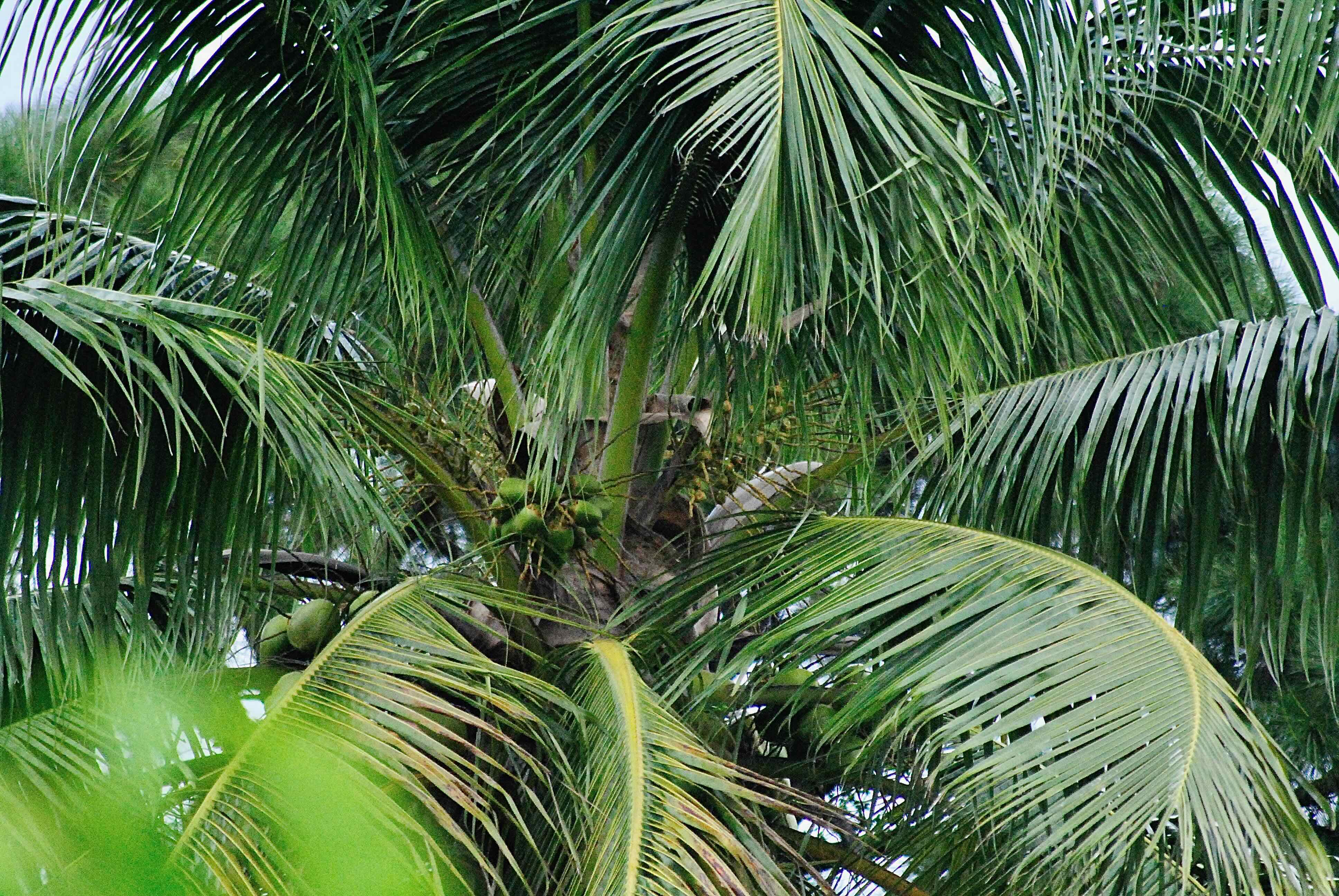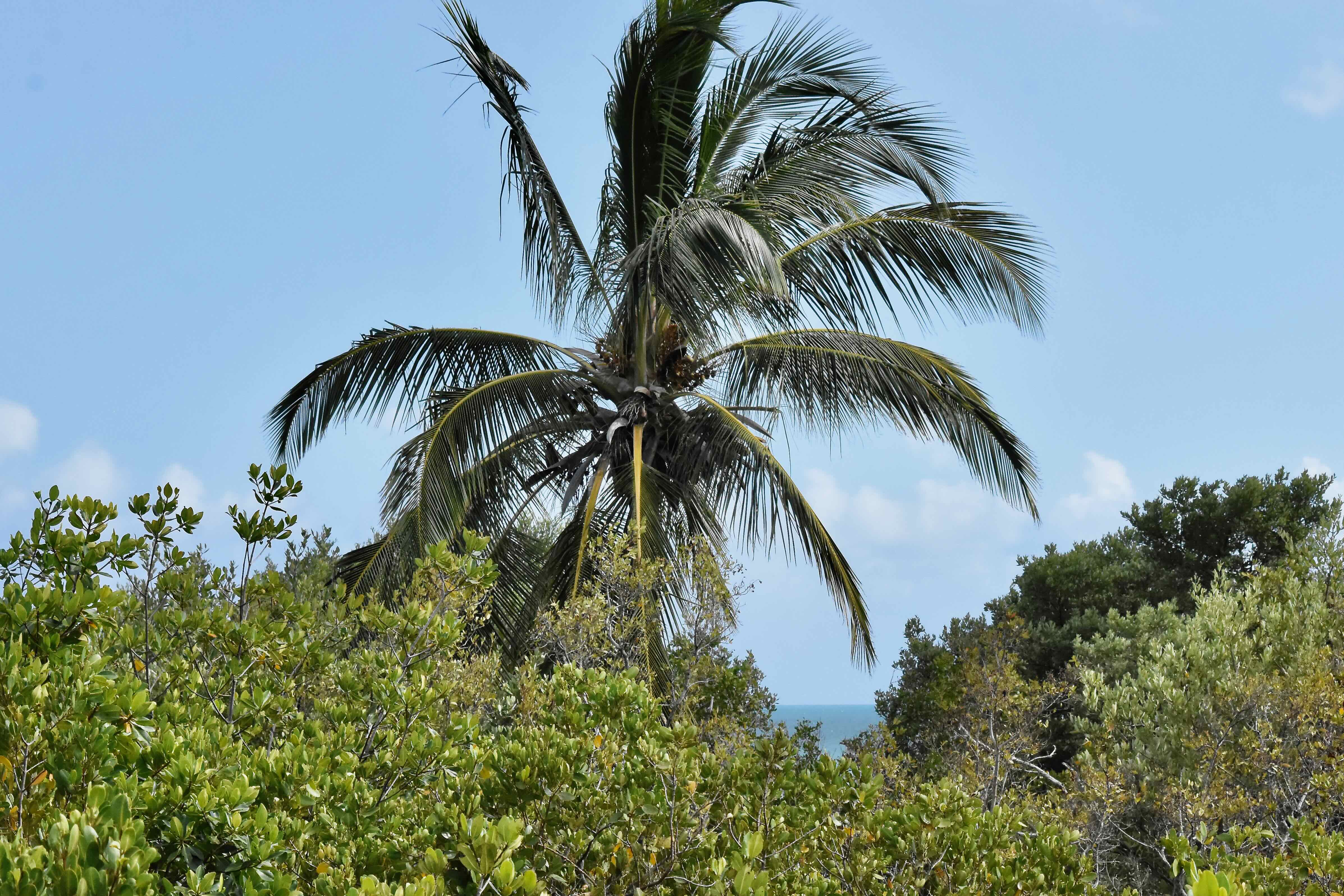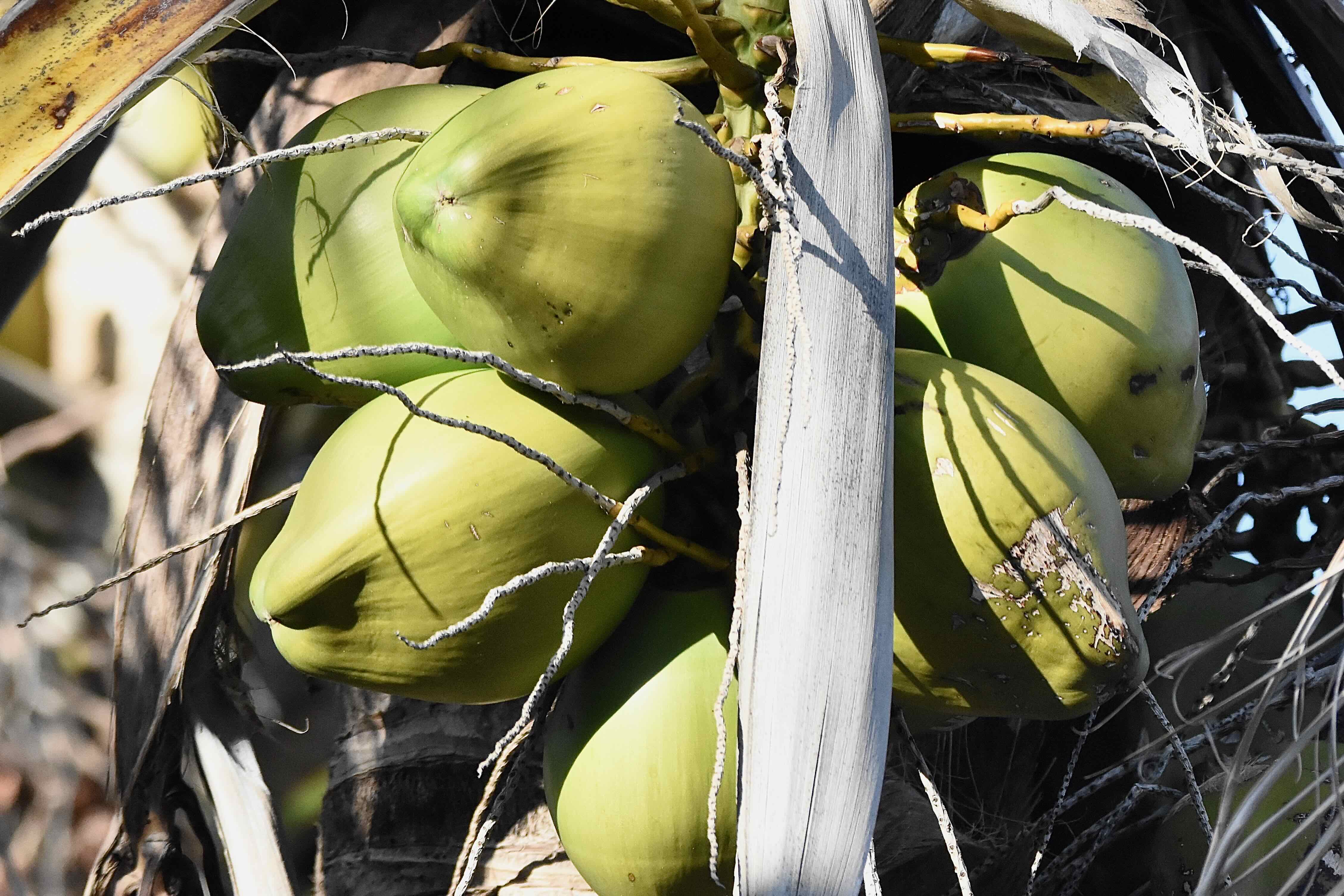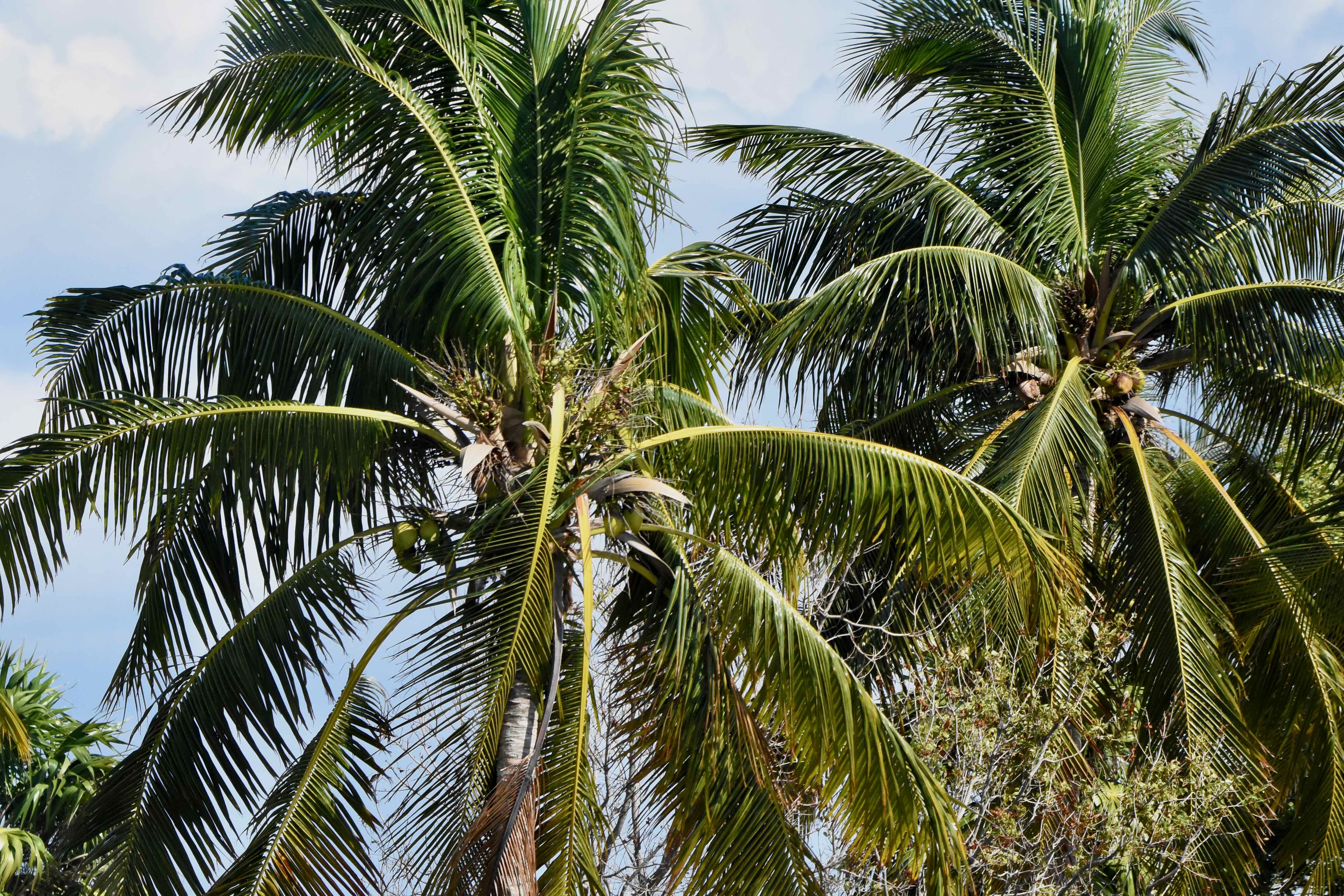
Coconut palms photographed at Boca Chita Key, Biscayne National Park, Homestead, Miami-Dade County, in February 2017.
Ah yes, the coconut palm, the ubiquitous symbol of Florida tourism and beach living, a bronzed body lounging nearby, umbrella drink in hand, Jimmy Buffett music undoubtedly playing in the background.
Gotta be native, right? Wrong. In fact, it’s considered an invasive here.
But don’t panic if you’ve got one growing in your front yard. It’s probably not a problem. More on that in a bit.
So where is the coconut from and how did it get here? Excellent questions! First, though, let's define what is native and what is not. A native is any plant or animal present in North America when the first Europeans stepped on its shores. Naturalists use various sources to determine whether an organism meets that criteria, including the writings of explorers.
The native range of the coconut, Cocos nucifera, is Melanesia, a region of the western Pacific that includes parts of New Guinea, Fiji, the Solomon Islands, New Caledonia and other island nations. But through ocean currents and a lot of help from us humans, coconut palms can be found pretty much anywhere with a tropical or subtropical climate, like Florida.
Florida, being roughly on the other side of the globe from Melanesia, undoubtedly needed a little human intervention in acquiring the coconut. According to Daniel Austin, the late Florida Atlantic University professor and eminent ethnobotanist, the first mention of finding coconuts in Florida came in 1775 by one Bernard Romans, a Dutch-born surveyor and map maker. Austin says it’s unclear from Romans’ writings whether he was referring to coconuts that had washed up on a beach or actual coconut palm trees. Note by then the Spanish had been exploring Florida for nearly 300 years without recording the presence of the coconut, or any other non-native palm for that matter.
The first confirmed mention of coconut palms came nearly 50 years later by Charles Blacker Vignoles in his book, Observations upon the Floridas. Vignoles came across an abandoned coconut palm grove four miles north of Jupiter Inlet, which would be somewhere near the modern borders of Palm Beach and Martin counties.
So when exactly the coconut palm found a home here is impossible to pinpoint. Its range within the United States is similarly vague.
The USDA’s PLANTS Database (link below) includes Georgia, South Carolina and North Carolina along with Florida as places where coconut palms have been scientifically documented growing in the wild. Problem is coconut palms can’t take freezing weather, and the first three states on that list do freeze regularly.
Our theory is coconut palms might have taken hold briefly along the coast during a period of relatively mild weather, but it’s unlikely that there are any established populations anywhere north of Florida.
(There is something called the high plateau coconut palm that can withstand temperatures as low as 25 degrees F, but it is not the same species (Beccariophoenix alfredii), nor does it produce edible fruit.)
At the other end of the spectrum, the Florida Plant Atlas, published by the University of South Florida (link below) limits the range of the coconut palm to only Miami-Dade and Monroe counties.
But the University of Georgia’s Early Detection and Distribution Mapping System has confirmed sightings as far north as Fort Pierce on the east coast and in the vicinity of Cedar Key on the west.
Oh and there’s the little matter of how Palm Beach and Palm Beach County got there names, which involved permanent stands of coconut palms. We’ll get into that in a bit.
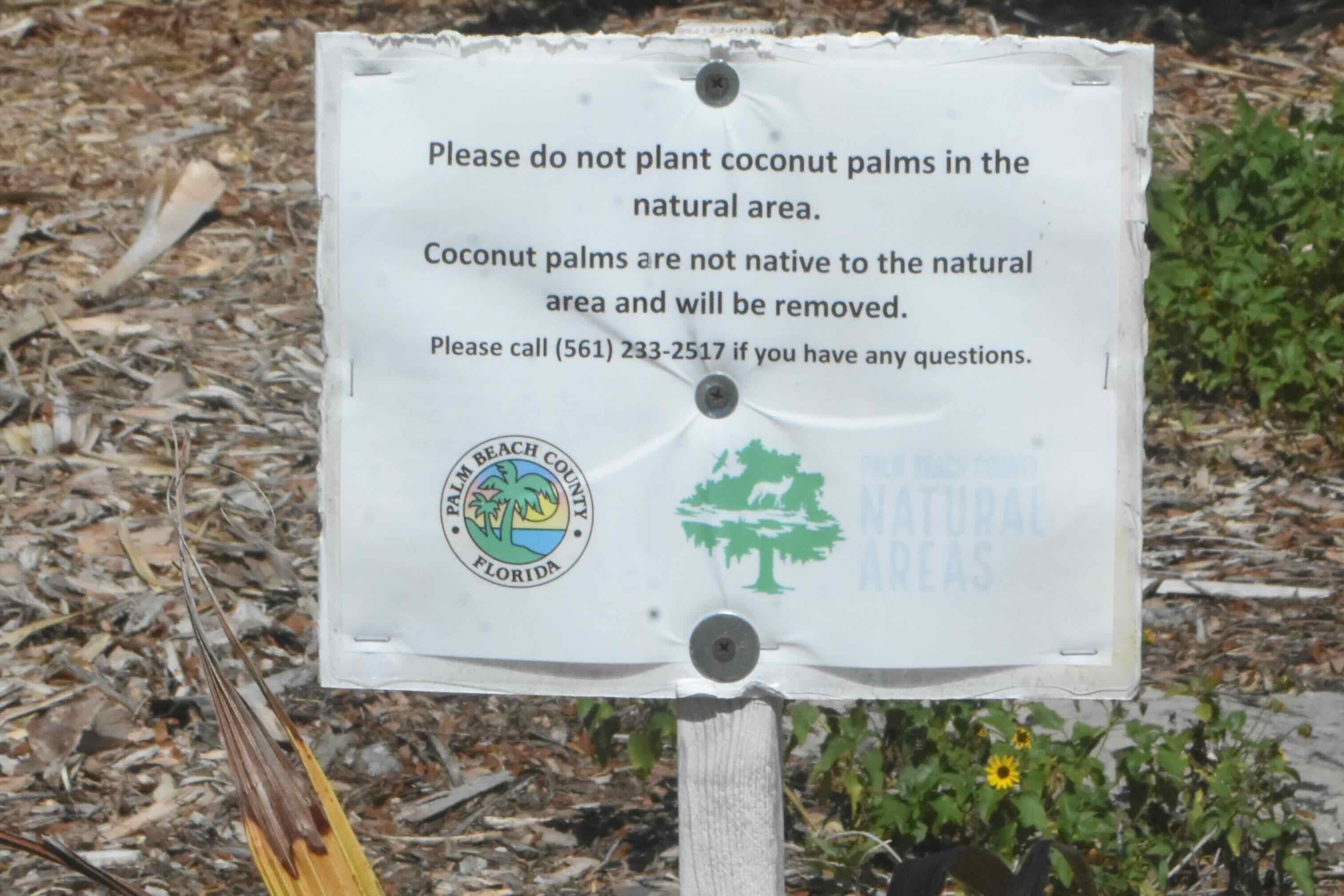 We spotted this sign a few years back near the entrance to Yamato Scrub Natural Area in Boca Raton. Apparently, people dumping coconuts within the natural area had become a problem.
We spotted this sign a few years back near the entrance to Yamato Scrub Natural Area in Boca Raton. Apparently, people dumping coconuts within the natural area had become a problem.Some botanical basics: coconut palms are one of the most easily recognizable plants of any kind found in Florida. The coconuts give them away.
Coconut palms can have straight, leaning or gently curved trunks. They can be absolutely huge, with a crown between 80 and 100 feet high. The fronds, or leaves, can be as long as 18 feet and a foot wide. The flowers appear on branchlets two or three feet long. Coconut palms bloom and produce fruit throughout the year.
Coconuts technically fall in a category of fruits called drupes. Young coconuts are green, turning yellow or a reddish color as they mature, then brown when fully ripe. A single tree can produce between 50 and 200 coconuts in a year.
The trees themselves do not produce flowers until they’re four or five years old. They do not produce fruit until they’re about 20.
Coconut palms are arguably the most economically important palm in the world. Thailand is the world’s largest exporter of coconuts in terms of dollar value (nearly $454 million) as of 2023, according to the World Bank. The United States ranked 16th with less than $10 million in exports.
There have been attempts to establish commercial coconut growing operations in Florida since the early 1800s but most failed to flourish for one reason or another. There still are a few commercial groves, including one in the southwestern part of the state that bills itself as the largest in the United States. However, we could not find any statewide data concerning commercial coconut production.
Coconut flesh is eaten both fresh and dried; its oil is used in cooking. The flesh is also made into a flour that is high in fiber. It’s been used in traditional medicines to fight diabetes, high cholesterol and obesity, but its effectiveness as a medicine is unverified scientifically. Coconut palms also have been used in construction. They also have religious and cultural significance in parts of the world.
Hawaiians used coconuts medicinally including to clean cuts. The Seminoles ate the flesh but also used coconuts to make dance rattles. So back to coconut palm history as told by Daniel Austin: The explorer Gonzalo Fernández de Oviedo, who traveled and chronicled Spain’s New World territories, recorded seeing coconut palms along the Pacific coast of Mexico in 1516. They were on the island of Cocos, now part of Costa Rica, when it was discovered in the 1530s.
How and when they got there is unclear but they probably were brought there by the Portuguese. By the 1550s, coconut palms had made their way to the Caribbean via Panama. Austin notes that none of the early Spanish explorers of Florida mentioned coming across coconut palms in their writing and neither did Jonathan Dickinson, the Quaker businessman and namesake of Jonathan Dickinson State Park, who became shipwrecked near Jupiter Inlet during the 17th century. That’s important in determining whether coconut palms are native to Florida.
Currents could have brought coconuts to Florida from one of the Caribbean islands, or they could have been brought here by human hands. It’s an open question.
One more historical note: in January 1878, a Spanish ship named La Providencia bound for Barcelona from Havana wrecked and washed ashore in an area of South Florida then known as Lake Worth. The ship’s cargo happened to be coconut palms, and Lake Worth residents salvaged the trees and planted them in an attempt to start a commercial grove.
The grove didn’t quite work out, but the naturalist John Kunkel Small, who traveled extensively throughout Florida, came across Lake Worth’s impressive coconut “forest.” The area became known as Palm City and eventually Palm Beach. West Palm Beach later sprung up in the early 20th century as did Palm Beach County. All thanks to the coconut palm.
A couple of unfinished pieces of business before we wrap this up: as we noted at the top, coconut palms are invasive here in Florida. The Florida Invasive Species Council, formerly the Florida Exotic Plant Pest Council, has listed coconut palms as a category II invasive since 2007. Cat II invasives have yet to do significant environmental harm but have the potential to do so.
But don’t feel too bad if you’ve got one in your yard. It’s likely yours isn’t a problem. The University of Florida has established a few guidelines for planting coconut palms: 1) Don’t plant them along a canal or moving stream 2) Don’t plant them on land bordering a natural area. 3) Throw away unwanted fruit with your yard waste. Otherwise, feel free to plant and enjoy your beautiful tree. Oh and if you’re in Central Florida and want to give it try, no worries. Knock yourself out.
Finally, a little taxonomy and etymology: Coconut palms are the sole member of the genus Cocos. It’s derived from the Portuguese word meaning head or skull, likely so-called because the fruit, with its three holes vaguely resembles a face and skull. Carl Linnaeus, the great Swedish naturalist, scientifically described the coconut palm and gave it the binomial name. He wanted to Latinize the Portuguese as coccos but decided against it. Nucifera comes from two Latin words, nux meaning nut and fera meaning bearing. Put the two together and you’ve got nut-bearing.
Coconut palms are members of Arecaceae, the family of palms.
Biscayne National Park

